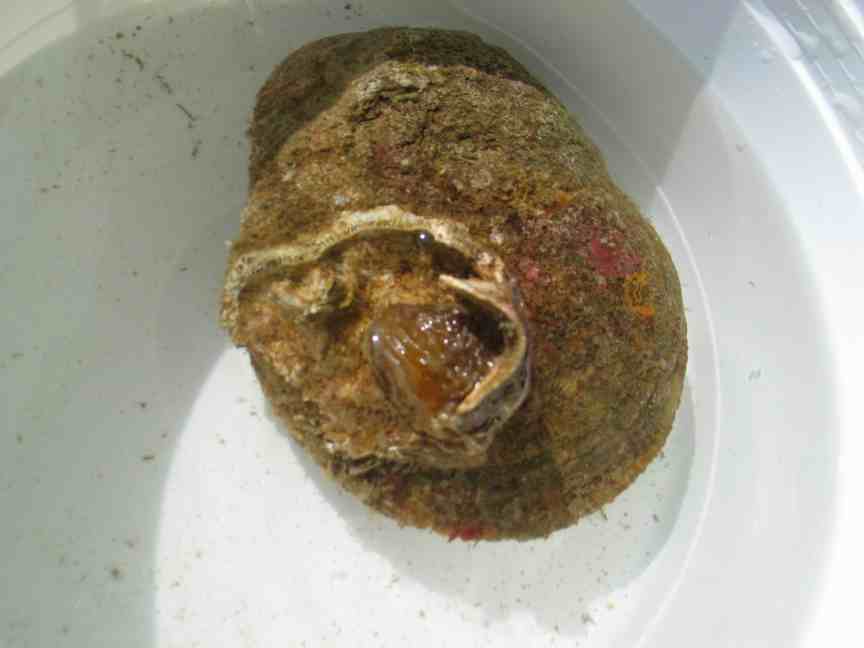 This disc-top tunicate is attached to one of the valves of a purple-hinged rock scallop.
This disc-top tunicate is attached to one of the valves of a purple-hinged rock scallop.
From ucmp.Berkeley.edu: “The Urochordata, sometimes known as the Tunicata, are commonly known as “sea squirts.” The body of an adult tunicate is quite simple, being essentially a sack with two siphons through which water enters and exits. Water is filtered inside the sack-shaped body. However, many tunicates have a larva that is free-swimming and exhibits all chordate characteristics: it has a notochord, a dorsal nerve cord, pharyngeal slits, and a post-anal tail. This “tadpole larva” will swim for some time; in many tunicates, it eventually attaches to a hard substrate, it loses its tail and ability to move, and its nervous system largely disintegrates. Some tunicates are entirely pelagic; known as salps, they typically have barrel-shaped bodies and may be extremely abundant in the open ocean.Urochordates have a sparse fossil record. A Precambrian fossil known as Yarnemia has been referred to the Urochordata, but this assignment is doubtful. Complete body fossils of tunicates are rare, but tunicates in some families generate microscopic spicules that may be preserved as microfossils. Such spicules have occasionally been described from Jurassic and later rocks. Few paleontologists are familiar with them; tunicate spicules may be mistaken for sponge spicules.”
| Other Members of the subphylum Urochordata at Race Rocks |
and Image File |
 The Race Rocks taxonomy is a collaborative venture originally started with the Biology and Environmental Systems students of Lester Pearson College UWC. It now also has contributions added by Faculty, Staff, Volunteers and Observers on the remote control webcams. The Race Rocks taxonomy is a collaborative venture originally started with the Biology and Environmental Systems students of Lester Pearson College UWC. It now also has contributions added by Faculty, Staff, Volunteers and Observers on the remote control webcams.
Garry Fletcher |